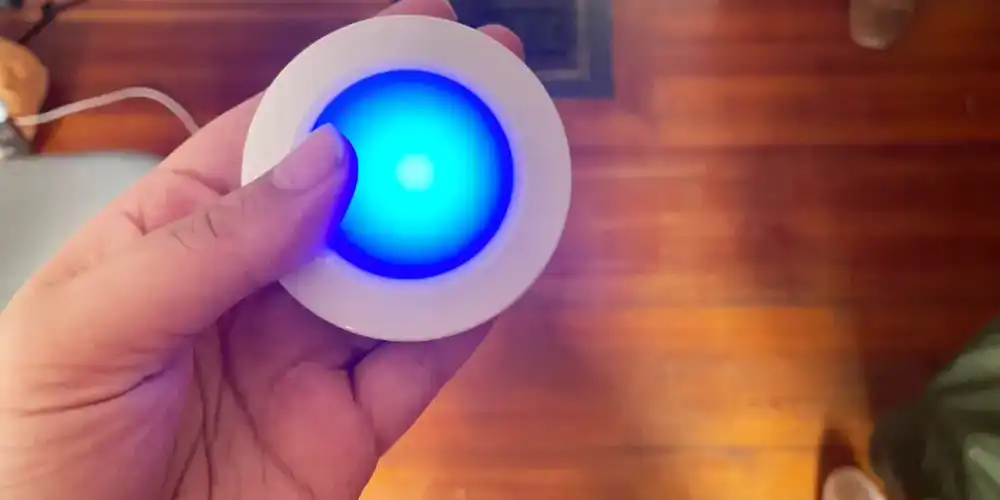JOIN US FOR THE NEWEST LED LIGHTS IN MARKET
Enter your email below to get 10% off your first order

As digital technologies continue to redefine our work culture, do not disturb light for home office is more and more popular nowadays. we are witnessing an unprecedented increase in remote work. This paradigm shift has seen a multitude of professionals transform parts of their homes into fully functional office spaces. Despite the comfort and flexibility that a home office offers, it also presents its own set of challenges, notably, maintaining an optimal work-life balance and avoiding disruptions. To tackle these hurdles, one solution is gaining popularity amongst remote workers: the innovative “Do Not Disturb Light For Home Office”. This tool is designed to ensure optimal productivity, fostering a conducive work environment within your home office.
In the realm of remote work, crafting a work environment that inspires productivity and minimizes distractions is of paramount importance. This necessity becomes particularly acute when you’re engrossed in high-priority tasks or participating in virtual meetings. One unintended interruption can break your workflow, derail your thought process, and negatively impact your productivity. This is where the “Do Not Disturb Light For Home Office” emerges as an effective solution. This device serves as a visual cue for your household members, indicating that you are engrossed in work and wish to avoid interruptions.
The Do Not Disturb Light For Home Office is a remarkably simple device, but its impact on your work efficiency can be profound. It is a signal device that can be mounted on your home office door or adjacent wall. Depending on the specific model and your unique requirements, these lights come in several forms. They can be standalone signs with built-in lights, USB powered devices that work in tandem with your computer, or smart lights that can be remotely controlled via your smartphone or digital assistant.
The operation is straightforward – as you prepare to delve into a task that requires intense concentration or join a meeting, you switch on the Do Not Disturb Light For Home Office. The lit sign then becomes a clear, visual cue to those around you, significantly reducing the likelihood of disturbances.
Enhanced Productivity
One of the most tangible benefits of a “Do Not Disturb” light is the potential increase in productivity. By effectively reducing interruptions, the light allows you to maintain a steady workflow. This focused approach can significantly boost your efficiency and overall work output.
Effective Communication
The “Do Not Disturb” light serves as a non-verbal yet powerful communication tool. It succinctly informs those around you that you are engaged in important work. By clearly defining your availability, it allows for better coordination with your household members and fosters an environment conducive to remote work.
Customizable to Your Needs
Many “Do Not Disturb” lights come equipped with multiple color settings, providing you with the flexibility to customize the light based on your tasks’ nature. For instance, you can set the light to red for high-priority tasks, yellow for regular tasks, and green when you’re available for interactions.
Concluding Thoughts
A “Do Not Disturb” light for your home office might seem like a simple addition, but its effectiveness in streamlining your work experience is undeniable. By ensuring uninterrupted work periods, it helps you manage your tasks more effectively. Thus, this small investment can yield considerable improvements in your productivity and overall work-life balance.
Your home office is more than just a designated workspace. It’s a delicate blend of your professional obligations and personal space. With a “Do Not Disturb” light, you can master this balance, ensuring an efficient and satisfying remote work experience. As we navigate the changing dynamics of professional life, embracing such tools and technologies
$99.00 Original price was: $99.00.$79.00Current price is: $79.00.
$199.00 Original price was: $199.00.$99.00Current price is: $99.00.
$1,299.00 Original price was: $1,299.00.$1,189.00Current price is: $1,189.00.
$299.00 Original price was: $299.00.$279.00Current price is: $279.00.
$299.00 Original price was: $299.00.$279.00Current price is: $279.00.
$299.00 Original price was: $299.00.$259.00Current price is: $259.00.
$499.00 Original price was: $499.00.$399.00Current price is: $399.00.
$299.00 Original price was: $299.00.$189.00Current price is: $189.00.
$299.00 Original price was: $299.00.$259.00Current price is: $259.00.
$199.00 Original price was: $199.00.$119.00Current price is: $119.00.
$699.00 Original price was: $699.00.$239.00Current price is: $239.00.
$699.00 Original price was: $699.00.$389.00Current price is: $389.00.